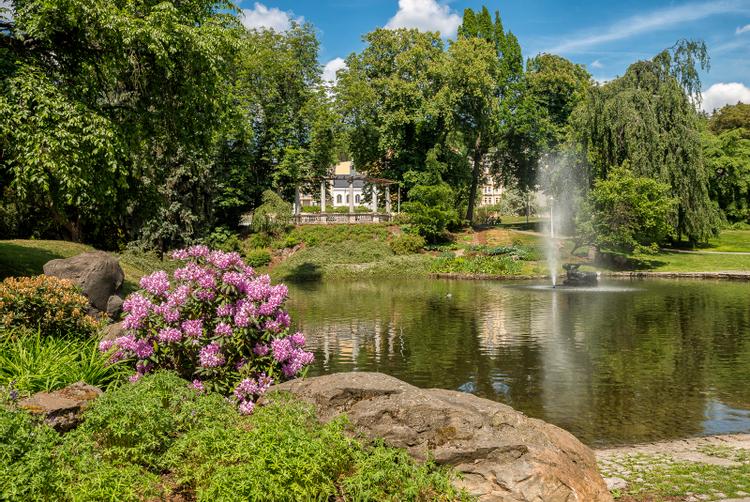Content Blocks
Prague
Prague is one of the most beautiful cities in Europe in terms of its setting - on both banks of the Vltava River- its townscape of burger houses, palaces and towers.
Prague has preserved the structure of its development until the present times. Within the core of Prague, successive stages of growth and changes have respected the original grand-scale urban structure of the Early Middle Ages. This structure was essentially and greatly enlarged with urban activities in the High Gothic period with more additions during the High Baroque period and in the 19th century.
Prague has been saved from any large-scale urban renewal or massive demolitions and thus preserves its overall configuration, pattern and composition.
Built between the 11th and 18th centuries, the Old Town, the Lesser Town and the New Town are the expressions of the great architectural and cultural influence enjoyed by this city since the Middle Ages.
Prague Castle, St. Vitus Cathedral, Charles Bridge and numerous churches and palaces were built mostly in the 14th century under the Holy Roman Emperor, Charles IV.
The Historical Centre represents a supreme manifestation of Medieval urbanism. The Prague architectural works of the Gothic Period (14th and 15th centuries), of the High Baroque of the 1st half of the 18th century and of the rising modernism after the year 1900 influenced the development of Central Europe, perhaps even all European architecture.
Prague represents one of the most prominent world centres of creative life in the field of urbanism and architecture across generations, human mentality and beliefs.
In the course of the 1100 years of its existence, Prague’s development can be documented in the architectural expression of many historical periods and their styles. The city is rich in outstanding monuments from all periods of its history.
Prague is culturally connected with important names in art, science and politics, such as Charles IV, Petr Parléř, Jan Hus, Johannes Kepler, Wolfgang Amadeus Mozart, Franz Kafka, Antonín Dvořák, Albert Einstein.


Marienbad
Marienbad is the second largest health spa in the Czech Republic. There are forty springs within the area and one hundred in the immediate area around Marienbad.
The spa history is not long but for that, all the more interesting. In the place, where in the 18th century it was still dominated by swamps and impenetrable forests, the elegant town, with modern buildings and of large public interest, originated.
In 1866, Marienbad was declared a city and by the beginning of the 20th century ranked among the most important spa centers in Europe.
The spa pavilions were mostly built in the classicist and neo-Renaissance style, while most of the buildings in the spa district of the town bear the imprints of the Art Nouveau style. Numerous cultural, scientific and political personalities came from all over the world to visit Marienbad, notably Johann Wolfgang Goethe, Prince Friedrich of Saxony, Earl Kašpar Šternberk, Joens Jakob Berzelius, Václav Jan Tomášek, Marie Szymanowská, F. Chopin, R.Wagner, A.Bruckner, G. Mahler, F. Nietzsche, F. Kafka, R.Kipling, M.Twain, A. Edison, P. de Coubertin, the English king Edward VII, the Russian Czar Nicholas II, and Emperor Franz Joseph II.


What to do in Marienbad
From the cultural point of view, Marienbad has a theatre built in 1868, various churches - the local Roman-catholic church of Assumption of the Virgin Mary, the Evangelic Church, the Orthodox Church of St. Vladimír – museums – the Chopin House and the Municipia Museum and the city also offer all over the year cultural events and festivals.
The town offers to its visitors numerous options for sports.
There are tennis court, golf fields, swimming pools, a number of fitness centres and a squash-centre. Other popular sports are walking, cycling and cross-country skiing namely in the area of Slavkovský les, which offers ideal conditions. For lovers of downhill skiing there is a skiing slope with cable-lift.


